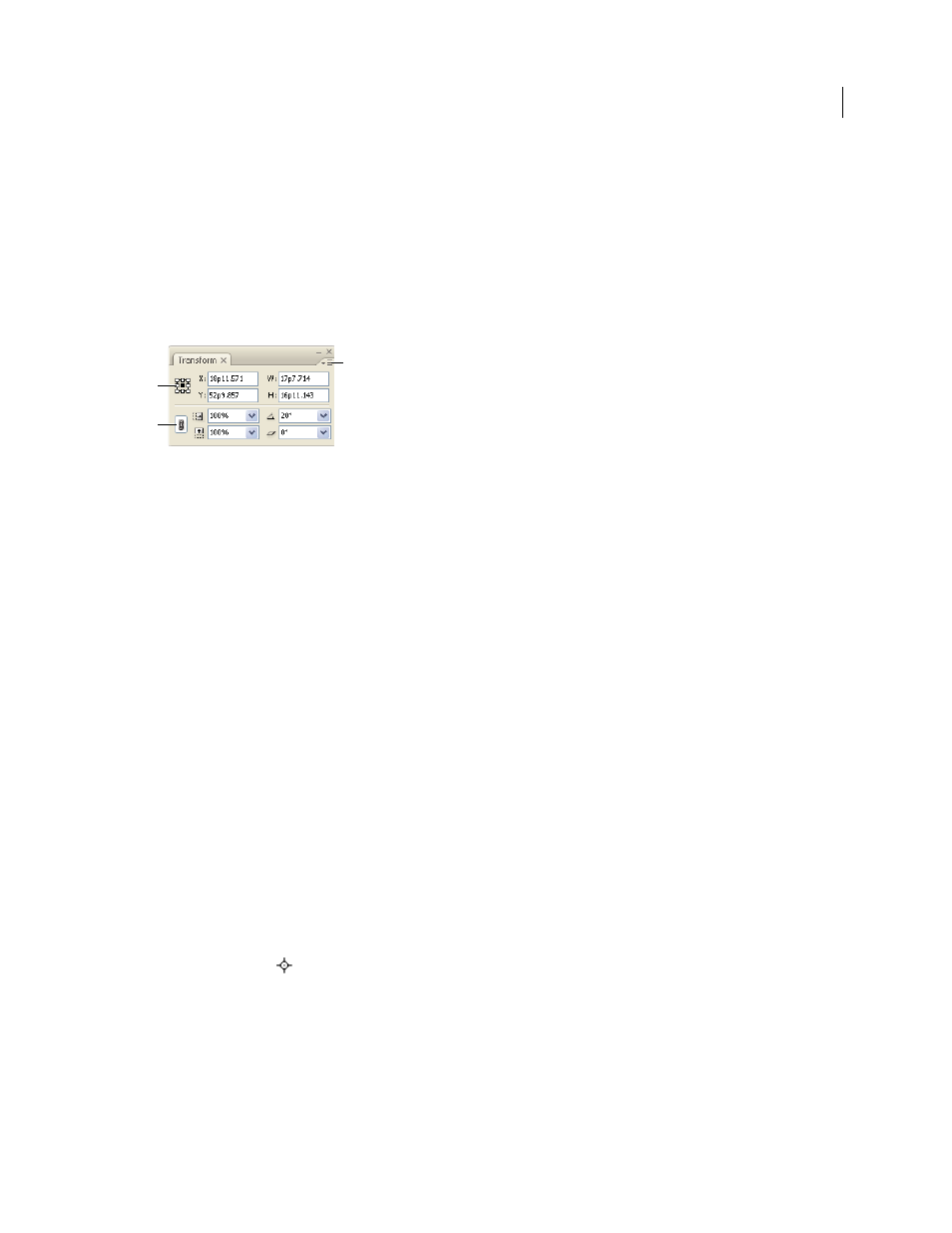Transforming objects, Transform panel overview, Display the transform panel – Adobe InDesign CS4 User Manual
Page 392: View geometric information about objects, Change transformation settings, Change the reference point for selected objects, Reshape, reorient, and resize objects. (see

384
USING INDESIGN CS4
Frames and objects
Transforming objects
Transform panel overview
Use the Transform panel to view or specify geometric information for any selected object, including values for
position, size, rotation, and shearing. Commands in the Transform panel menu provide additional options and quick
ways to rotate or reflect objects.
Note: The buttons and panel menu commands in the Transform panel are also available in the Control panel.
Transform panel
A. Reference point locator B. Constrain Proportions icon C. Panel menu
Display the Transform panel
❖
Choose Window
> Object & Layout > Transform.
View geometric information about objects
When you select an object, its geometric information appears in the Transform and Control panels. If you select
multiple objects, the information represents all selected objects as a unit.
❖
Select one or more objects, and display the Transform panel (Window
> Object & Layout > Transform).
Position information is relative to the ruler origin and the reference point of the object. Angle information is relative
to the pasteboard, where a horizontal line has an angle of 0°.
Change transformation settings
The Transform panel includes several options that determine how objects are transformed and how transformations
are displayed in the Transform and Control panels.
See also
Determine how scaling is tracked
Change the reference point for selected objects
All transformations originate from a fixed point on or near the object, called the reference point. The reference point
is marked by an icon
when a transformation tool, such as the Scale tool, is active.
A
B
C
Updated 18 June 2009
